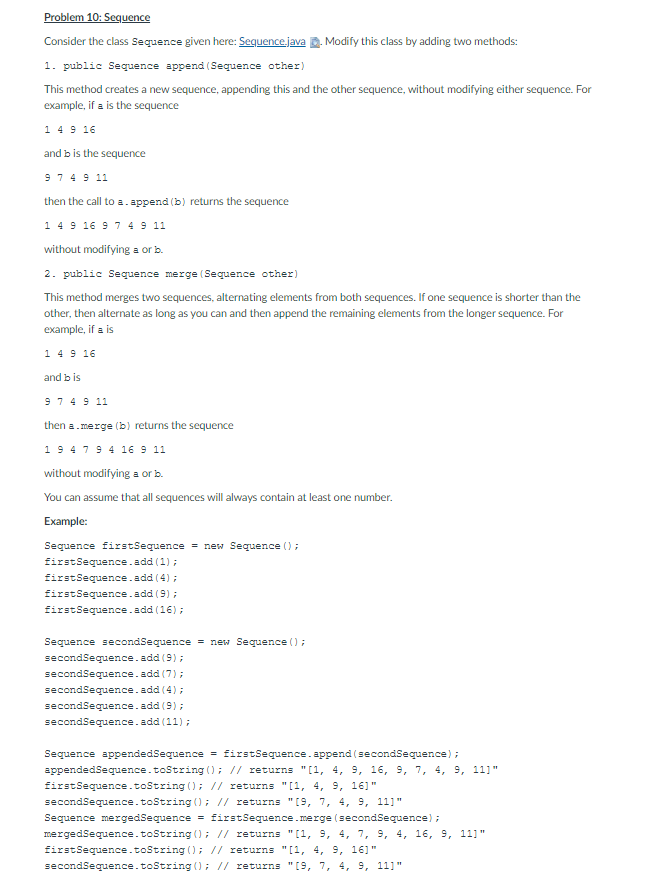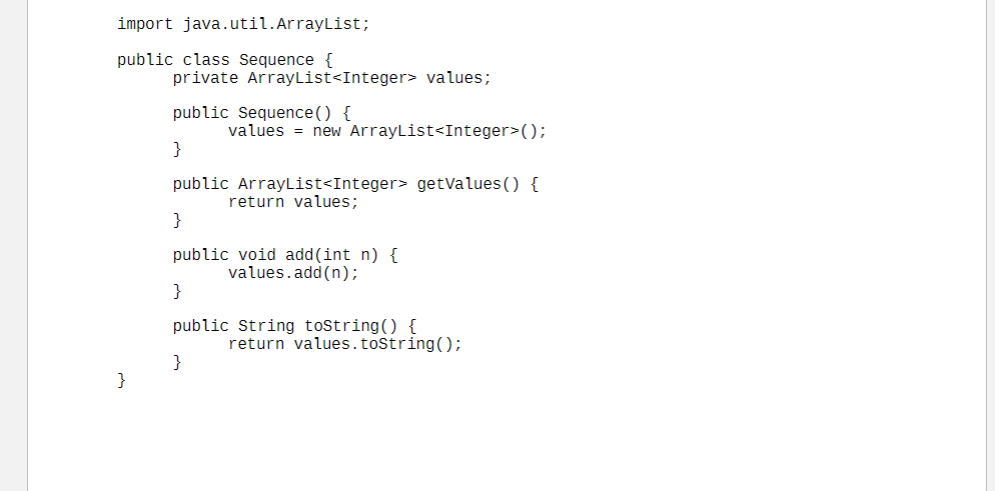Answered step by step
Verified Expert Solution
Question
1 Approved Answer
JAVA Problem 10: Sequence Consider the class Sequence given here: Sequence.java 2. Modify this class by adding two methods: 1. public Sequence append(Sequence other) This
 JAVA
JAVA

Step by Step Solution
There are 3 Steps involved in it
Step: 1

Get Instant Access to Expert-Tailored Solutions
See step-by-step solutions with expert insights and AI powered tools for academic success
Step: 2

Step: 3

Ace Your Homework with AI
Get the answers you need in no time with our AI-driven, step-by-step assistance
Get Started


